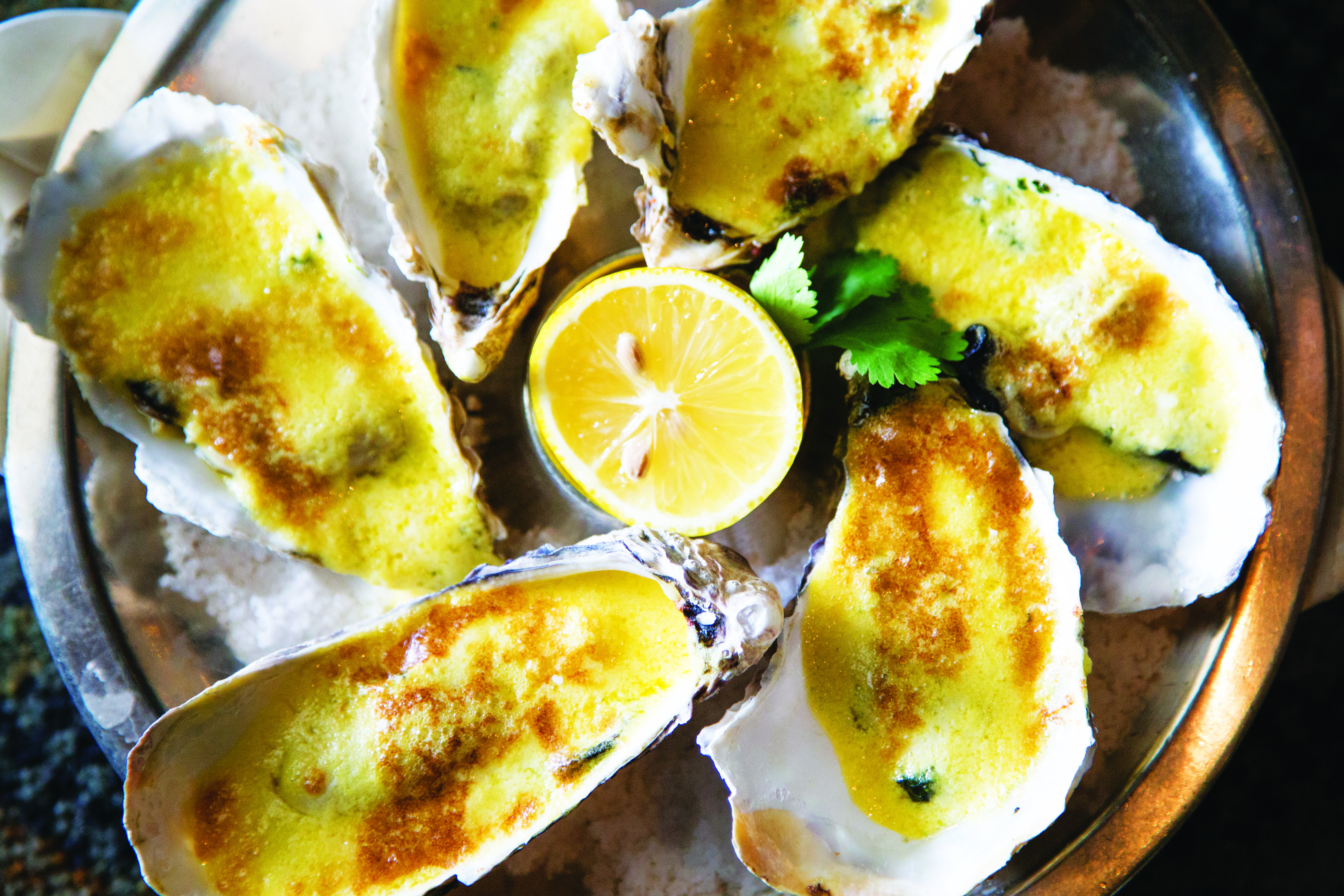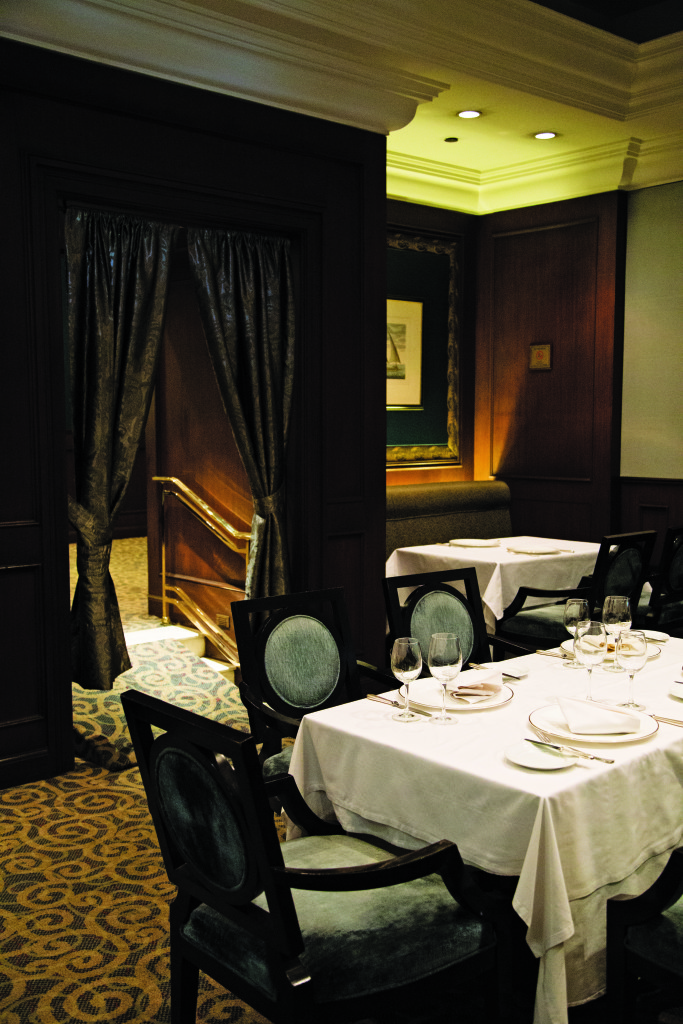Text by DOUGLAS CANDANO |Â Photography by TAMMY DAVID |
In early October, it was announced that the hotel management partnership between Ayala Land and the InterContinental Hotels Group would end on Dec. 31, 2015. This meant that a little over 46 years after it opened as Makati’s first luxury hotel, the InterCon, as it is fondly known, with its building designed by National Artist Leandro Locsin, would be demolished to make room for a mixed-use, commuter-centric development.
(If walls could talk, they would share the many memories created)
While the news was generally met with a sad, resigned understanding, it was inevitable that a sense of loss would linger among those with fond memories of the hotel. Although this would indubitably include longtime staff and those who had celebrated personal milestones at the InterCon, outlet regulars would undoubtedly also be included in this mix, particularly those of The Prince Albert Rotisserie, the property’s famed fine dining restaurant that has been operational since 1969.
Consequently, a sort of pained nostalgia accompanied me as I traversed the marble tiles toward the familiar double doors. As a regular guest at Prince Albert throughout the late 1980s until the 2000s, memories freely mixed with bits of knowledge about the restaurant’s significance as a local culinary landmark. This admittedly led to a certain duality in my understanding of the restaurant.
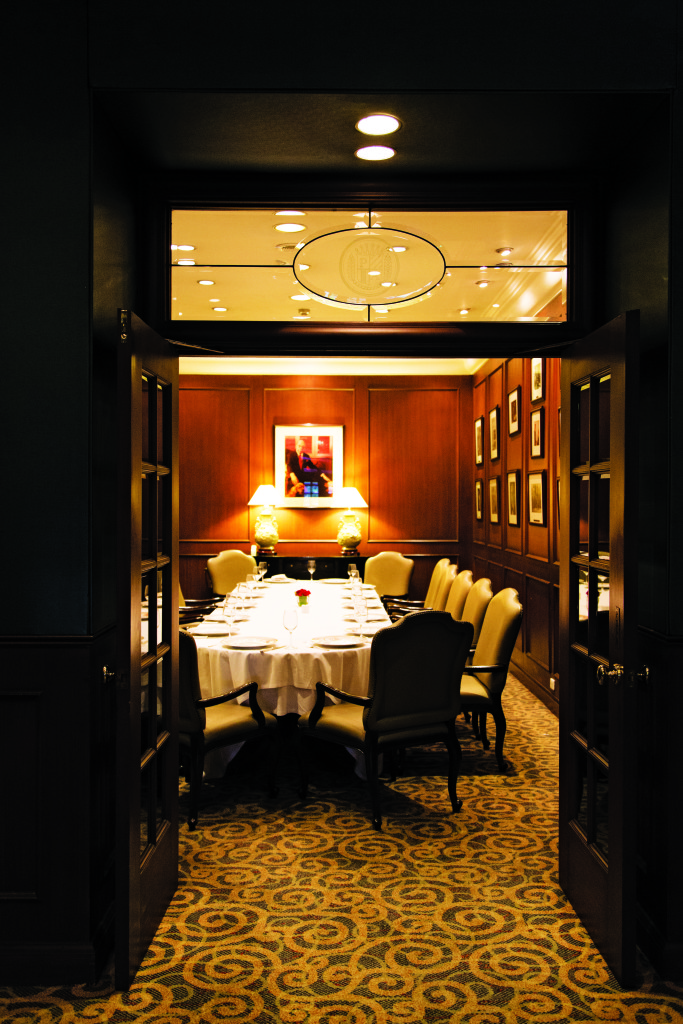
(The Carlos P. Romulo Room was home to many elegant affairs)
On one hand, there was the 120-seater icon that counted Presidents, statesmen (Carlos P. Romulo, who was a frequent guest, was honored by the hotel with a 14-seater function) and business leaders among its regulars, in addition to hosting the occasional foreign dignitary such as Margaret Thatcher and Prince Albert of Belgium.
On the other hand, this intimidating litany of guests was tempered by the memories of the meals I had there while growing up, whether it be a celebratory dinner or an impromptu lunch. This Prince Albert was always an intimate experience, the very definition of fine dining, where one would be able to sample some of the city’s finest French and Continental food in a cozy environment that was expertly managed by restaurant directors Ricardo Castro (who, sadly passed away a couple of years ago) and Francis Felipe (who retired in April of this year), whose personalized approach and great attention to detail have always been my benchmark for excellent service.
Before I get to sort through this mix of fact and memory, I arrive at the restaurant, taking time to glance at Prince Albert’s small, elegant plaque before entering. As I am welcomed by Teri Flores, Hotel Intercontinental Manila’s director of public relations, and get reacquainted with Rod Malabrigo, who is now the restaurant’s manager after spending many years as its supervisor, I can’t help but notice that things have changed very little, with the simple table settings and unobtrusive artwork still managing to convey a timeless refinement that is perhaps best articulated by the sheen of the open kitchen’s copper pots and pans that can be admired from the various curtained areas of the main dining room.
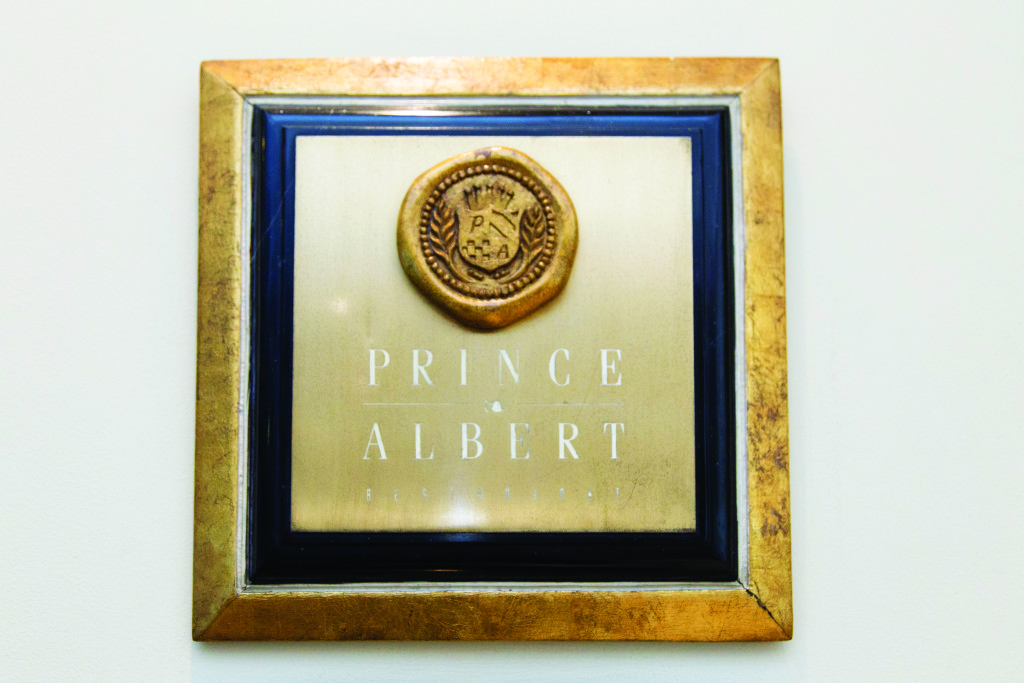
(The simple plaque welcoming diners to the outlet)
As we get ready for lunch, we are introduced to Executive Chef Jean-Marc Veron, the last in a long list of elite chefs who have practiced their skills and artistry at Prince Albert, which counts names such as Cyrille Soenen, Billy King and Jessie Sincioco among its kitchen’s alumni. Before heading back to his duties, the Toulouse native mentions that he had decided to revamp the menu to revisit the restaurant’s roots, working with his team of veteran chefs to look back to a style of cuisine that is becoming rare in France because of its long preparation time and labor intensiveness.
Given the circumstances, it was understandable that the mood at our table was somber, with anecdotes from the hotel’s decades of existence being exchanged. However, this immediately changed to widespread delight with the arrival of the appetizers, with some dishes that I had frequently enjoyed as a child being served alongside food that I wished I had learned to appreciate when I was younger.
Perhaps the best illustration of this latter category can be seen in the initial appetizers, as I considered oysters and snails to be too slimy as a squeamish boy. The fine de claire oysters cooked Rockefeller style may very well be the best version of this dish that I’ve ever had, using freshly harvested fine de claire oysters from Marennes-Oléron as a base for an incredibly decadent morsel that combines a creamy spinach and mornay sauce blend with a topping of rich hollandaise and parmesan. This is then followed by the Escargot Bourguignon, which comprises of small tender snails cooked in an herb-and-garlic butter and topped with a piece of puff pastry that allows one to fully savor the buttery goodness, while regretting the lack of culinary openness that one may have had as a child.
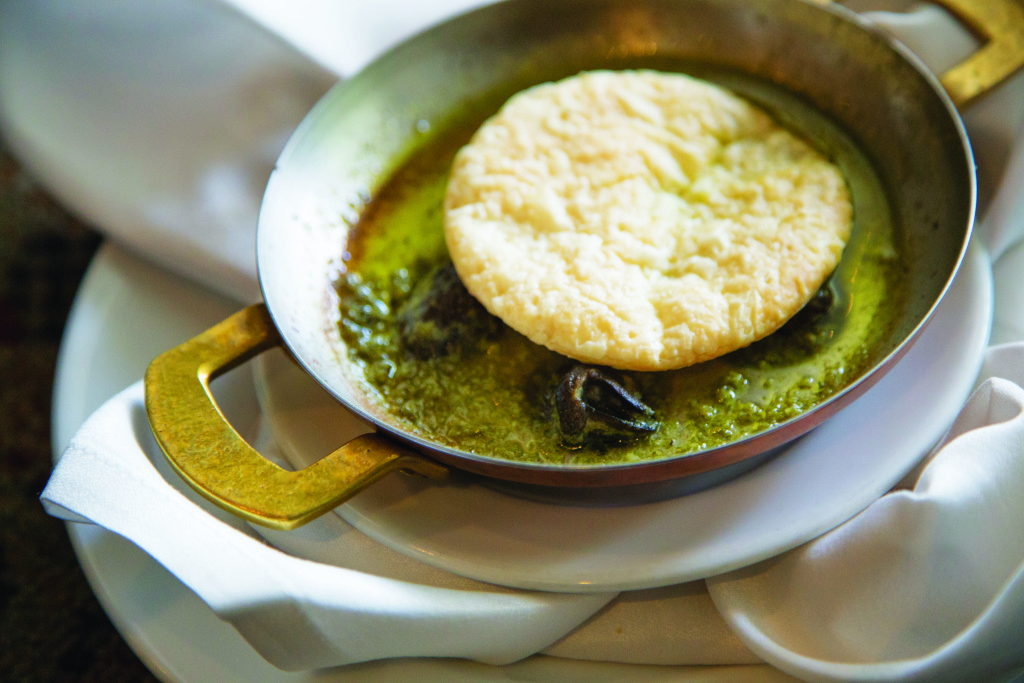
(Escargot Bourguignon)
A venture into more familiar territory could be felt with the arrival of the foie gras aux pommes. Although the presentation of Prince Albert’s foie gras dish has varied over the years, the flavors of this version were definitely on point, with the fattiness of the foie being given the perfect counterbalance by the tartness of the apples and the crisp blandness of straw potatoes.
While it was unfortunate that the lobster bisque that was a childhood staple was unavailable due to the high demand from other nostalgia seekers, the soup a l’onion was an adequate replacement, with flavorful beef broth being elevated by caramelized onions and a gratin of various cheeses. Besides, the Absolut gambas managed to satisfy my cravings for concentrated crustacean flavor, by cooking prawns in a shrimp bisque base flambéed with Absolut Vodka.
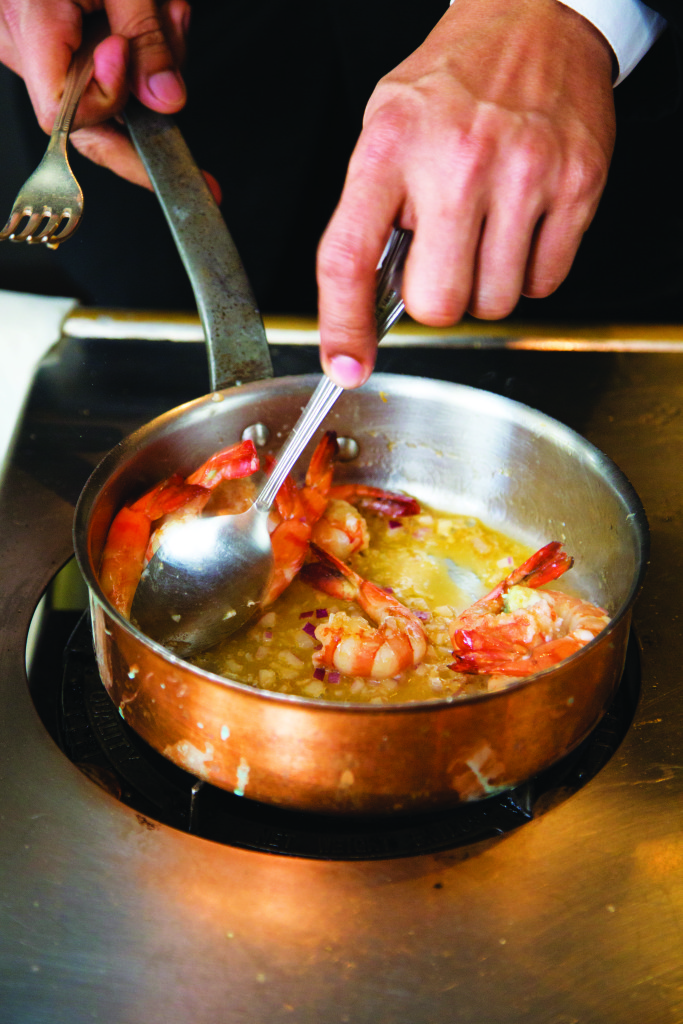
(Absolut gambas)
Although it has become a rarity, tableside service has always formed an important part of Prince Albert’s identity, with the skill of the server being paramount to the creation and execution of the dish. Consequently, Rod brings out a trolley adorned with a huge wooden bowl, oversized wood utensils and different measures of various ingredients to create a caesar salad from scratch, resulting in a complex dressing that evenly holds together the crisp lettuce, the bacon, croutons and parmesan cheese to create a personal space where time, memory and taste become a composite of an indefinite past.
This vague notion of childhood is extended by the arrival of the main course, the famed Prince Albert Prime Rib, which Rod expertly carves from a trolley to serve with a piece of Yorkshire pudding and some red wine jus. As expected, the prime rib does not disappoint, with the supple meat seasoned beautifully and cooked to a perfect medium rare. While the Yorkshire pudding and the jus manage to extend the illusion, verisimilitude is somewhat broken by the pleasant addition of the marinated grilled vegetables and gratin potatoes to replace the expected baked potatoes laced with sour cream, bacon and chives and the mixed vegetables that would always be lathered with butter in a small silver bowl.
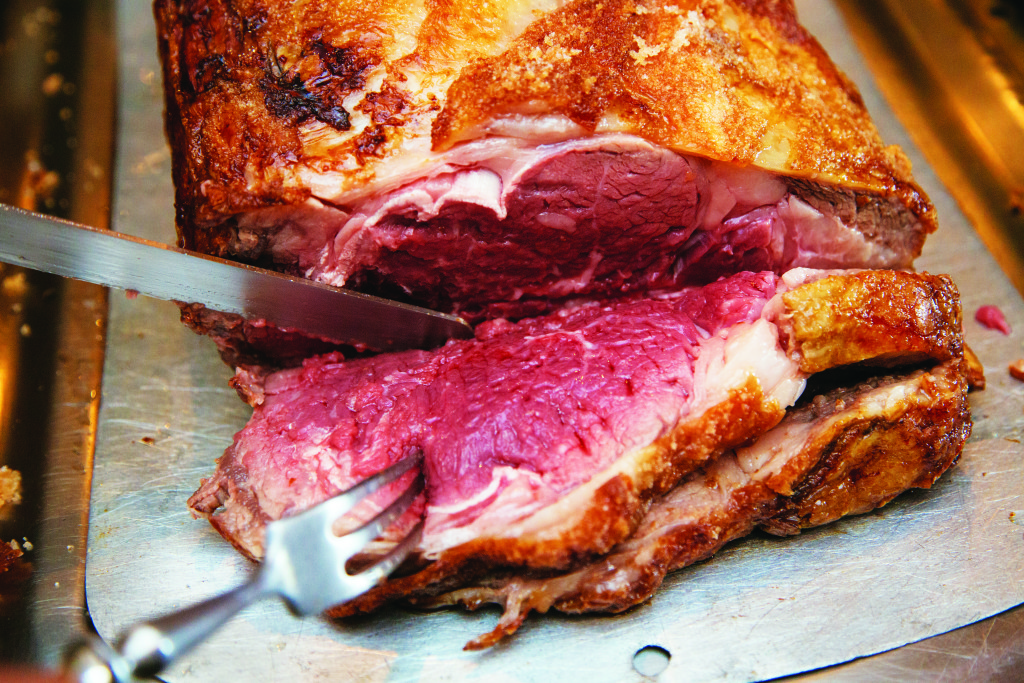
(Prime rib)
After the succession of savory dishes, a trio of desserts arrive to signal that this bittersweet journey into nostalgia, rediscovery and memory is about to end. Rod starts by rolling out another trolley to create a crepes Suzette, making a delicate butter sugar crepe that he flambés using a measure of Gran Marnier. Served with a scoop of vanilla ice cream, the resulting dish is a layered exploration of hot, cold, sweet and sour. Another form of synthesis is then posited by the chocolate lava featuring an unassuming piece of chocolate cake filled with a gooey mass of molten chocolate that oozes out once the cake is cut. When allowed to combine with its accompanying vanilla ice cream, the molten chocolate brings out a rich creaminess that differs in temperature with every bite.
Admittedly, these were unfamiliar flavors since I had always skipped desserts at Prince Albert. However, an odd sense of recognition was brought about by the crepes Samurai, which features a crepe stuffed with sweet ripe mangoes and a layer of gratinated sabayon to create a smooth bite that somehow combines French and Filipino flavors. Upon hearing about this sense of deja vu, Teri mentions that the dish is actually the signature dessert of Cafe Jeepney, the hotel’s coffee shop, where it has consistently been one of the best sellers at that outlet’s daily buffet.
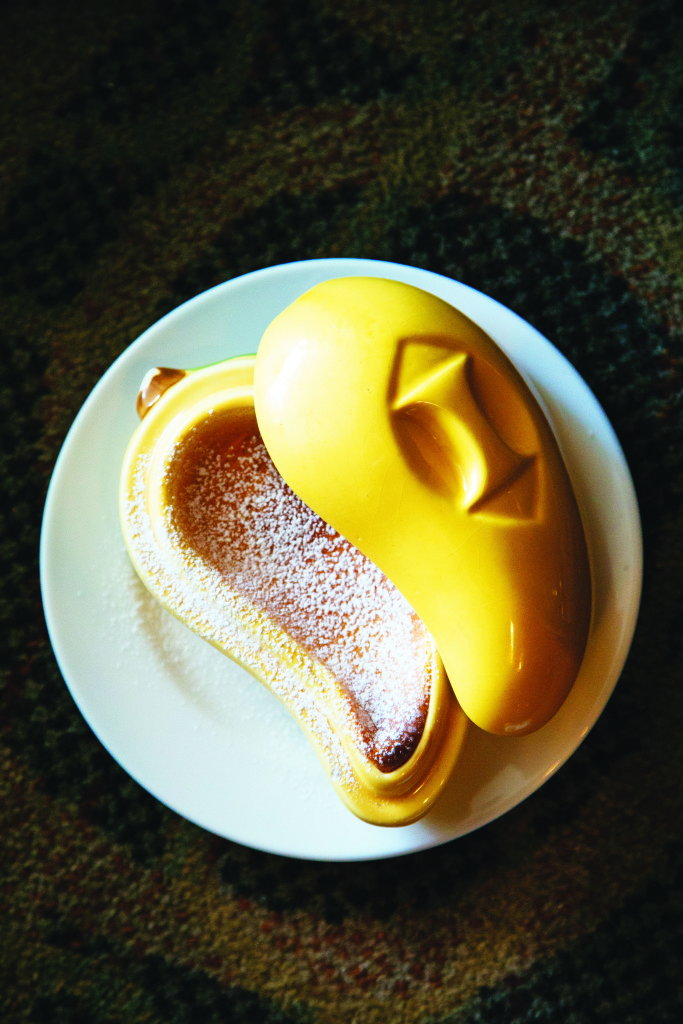
(Crepes Samurai)
Although this revelation shed light on my hitherto unexplainable familiarity, it was also a solemn reminder that it was not just Prince Albert, but the whole hotel that would be closing. With our feast, and my personal nostalgic journey finished, Chef Jean-Marc returns to chat before we all say our goodbyes. On my way out, I take one look back towards the familiar double doors and reflect on an anecdote that the chef had just mentioned about working at a similarly iconic French restaurant in Kuala Lumpur that people still talked about years after it had closed. In this sense, I remember some of the long gone restaurants that my father still occasionally resurrects in anecdotes. Names and descriptions of places such as Hugo’s at the Hyatt and Abelardo’s at the Westin can be seen as proof that memory and nostalgia are really powerful tools that can revive something that has ceased to physically exist. Since my childhood memories only constitute a minuscule speck of the complex webs of the human experience that have intersected at Prince Albert, I leave with the confidence that it will continue to live on, years and even decades after its last guest on Dec. 31, 2015 has been satisfied.

